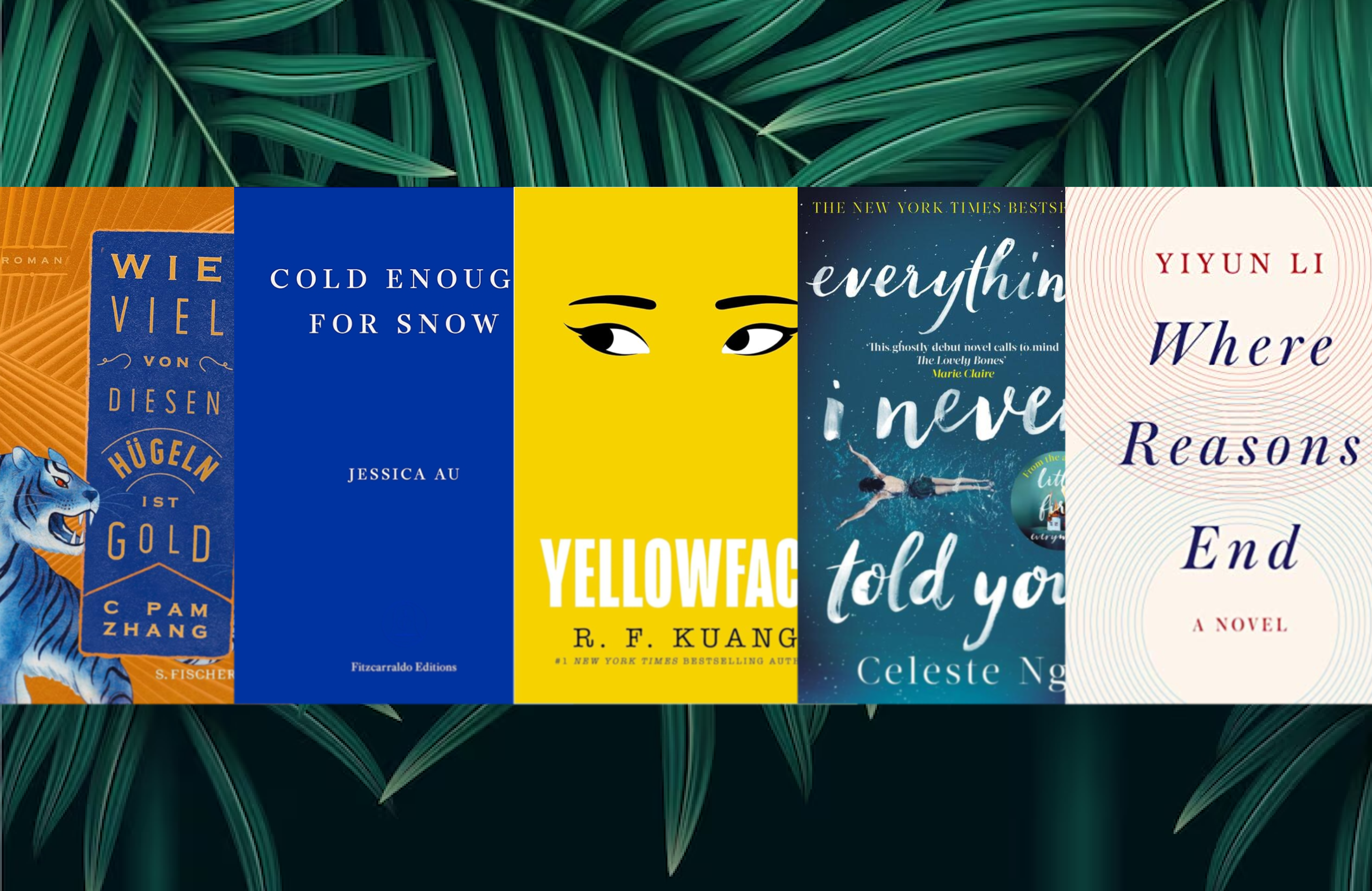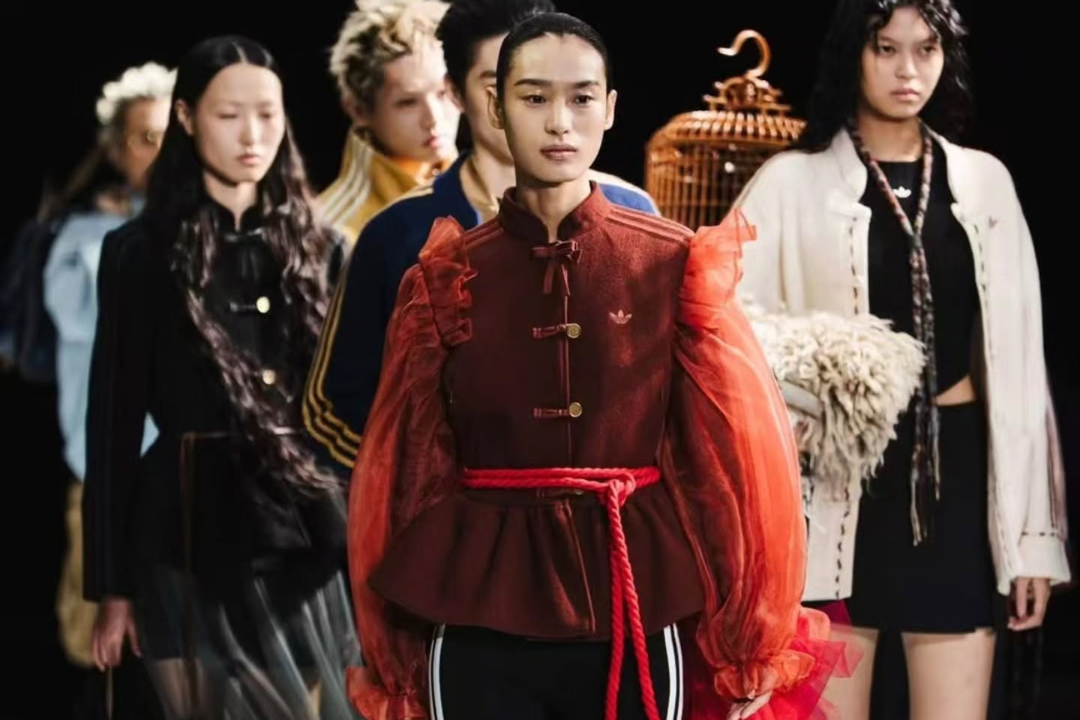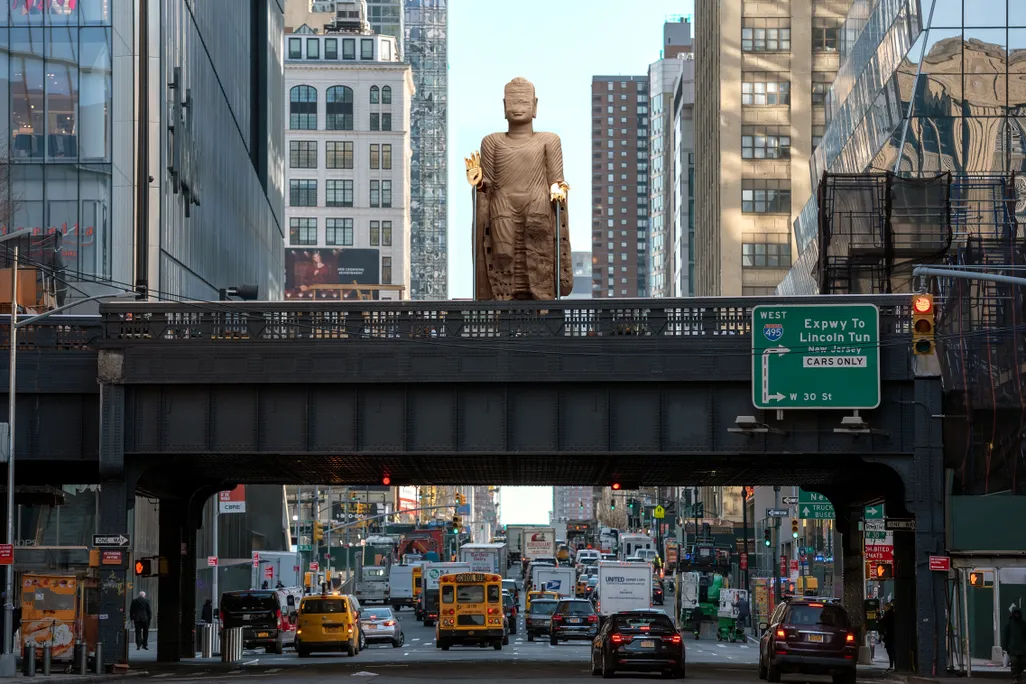China Designers is a series that showcases the wide spectrum of creativity in Chinese fashion design. From small designers to big brands, these names are changing the connotations of “Made in China,” one collection at a time. Write to us if you have a suggestion or submission.
At this fall’s Shanghai Fashion Week, labels both emerging and established took the stage in one of the world’s first offline fashion weeks since the outbreak of Covid-19. But one of its most talked-about shows was by a designer making her debut at the event: Parsons graduate Shie Lyu, who only wound up in Shanghai a few months previously after the pandemic forced an abrupt change of plans.
Lyu’s debut collection, entitled “Glamour Buffer,” gives both flawed industrial materials and fabrics a second chance in the limelight. Over half of the garments are upcycled — some made from leftovers from a past project with Swarovski in graduate school, others from garment waste collected from clothing manufacturers.

As her 14 models walked the runway wearing the collection in October, irridescent skirts and edgy neon accessories dazzled the audience as they danced under the spotlight. “I chose the word ‘glamour’ because of the nature of the materials for this season,” Lyu tells RADII. “The upcycled materials I chose reflect natural sunshine, and therefore create very beautiful light.”
The garments also demonstrate the young designer’s adeptness at beading. Topped with fitted caps and asymmetrical statement earrings, her looks draped body harnesses and flapper-esque dresses made from shimmering, secondhand sequins over psychedelic bodysuits and mesh stockings.

But two-thirds of her designs in the show are not for sale. As each of them is one-of-a-kind and designed around the upcycled materials she used, mass manufacturing them just isn’t possible, she says.
Related:
 China Designers: Meet the Young Designer Turning Fabric Scraps Into High FashionIt’s hard to believe Lowe Tong’s garments are entirely made from discarded, old materialsArticle Sep 22, 2020
China Designers: Meet the Young Designer Turning Fabric Scraps Into High FashionIt’s hard to believe Lowe Tong’s garments are entirely made from discarded, old materialsArticle Sep 22, 2020
Lyu’s decision to have upcycling play so much of a role in her first collection was somewhat of an accident, having only had access to limited materials while on lockdown in China during the pandemic. She used whatever was available to her to begin the new designs, and once factories resumed production and delivery later in the year, she was able to source fabrics locally to finish the other half.
Born in the southwestern Chinese city of Chongqing, Lyu took the long way into the fashion world. Her globetrotting career saw her study finance in Australia, before she earned her first of two Masters degrees in fashion management in Tokyo.

But Lyu had been experimenting with her own designs for years, cultivating an interest in non-traditional, and especially biodegradable materials that helped pave the way for her label. This included crafting clothing out of seaweed and glycerin paper fabrics, and even producing bacteria-grown “bio-skin” in her home studio. Lyu told WWD this year that at Parsons, she felt her approach was much different from her classmates, since she was the only student in her program not from a conventional fashion background.
Lyu is one of a growing number of Chinese fashion labels expressing a commitment to sustainability, though some believe customers have been slow to embrace the concept. In the world of independent design, Labelhood — a design platform and showcase that partners yearly with Shanghai Fashion Week — has given space to sustainable brands such as FFIXXED in the past few years, which helped put the trend on the map.
Related:
 Labelhood: How a Beijing Boutique Became a Major Force in Chinese FashionOnce a 20-square-meter boutique in Beijing called Dongliang, today Labelhood works with some of the most dynamic young names in Chinese fashionArticle Jun 02, 2020
Labelhood: How a Beijing Boutique Became a Major Force in Chinese FashionOnce a 20-square-meter boutique in Beijing called Dongliang, today Labelhood works with some of the most dynamic young names in Chinese fashionArticle Jun 02, 2020
Lyu herself expresses high expectations for how sustainability should be integrated into the every day — though for a designer who makes theatrical, one-of-a-kind garments, it’s hard to say where she sees her label playing a role in this movement. “Sustainable fashion should not be a trend,” she says, “but rather a normal thing integrated into people’s daily lives.” Her concept for “Glamour Buffer” similarly puts fashion in a broader context, aiming to explore the role clothes and sustainability can both play in modern society.
As Lyu makes Shanghai her home base and embarks on her label’s next collection, expect more stellar examples of how creative, unconventional, and downright glamorous sustainability can be.
Follow Shie Lyu on Instagram.
All images: courtesy Shie Lyu
















